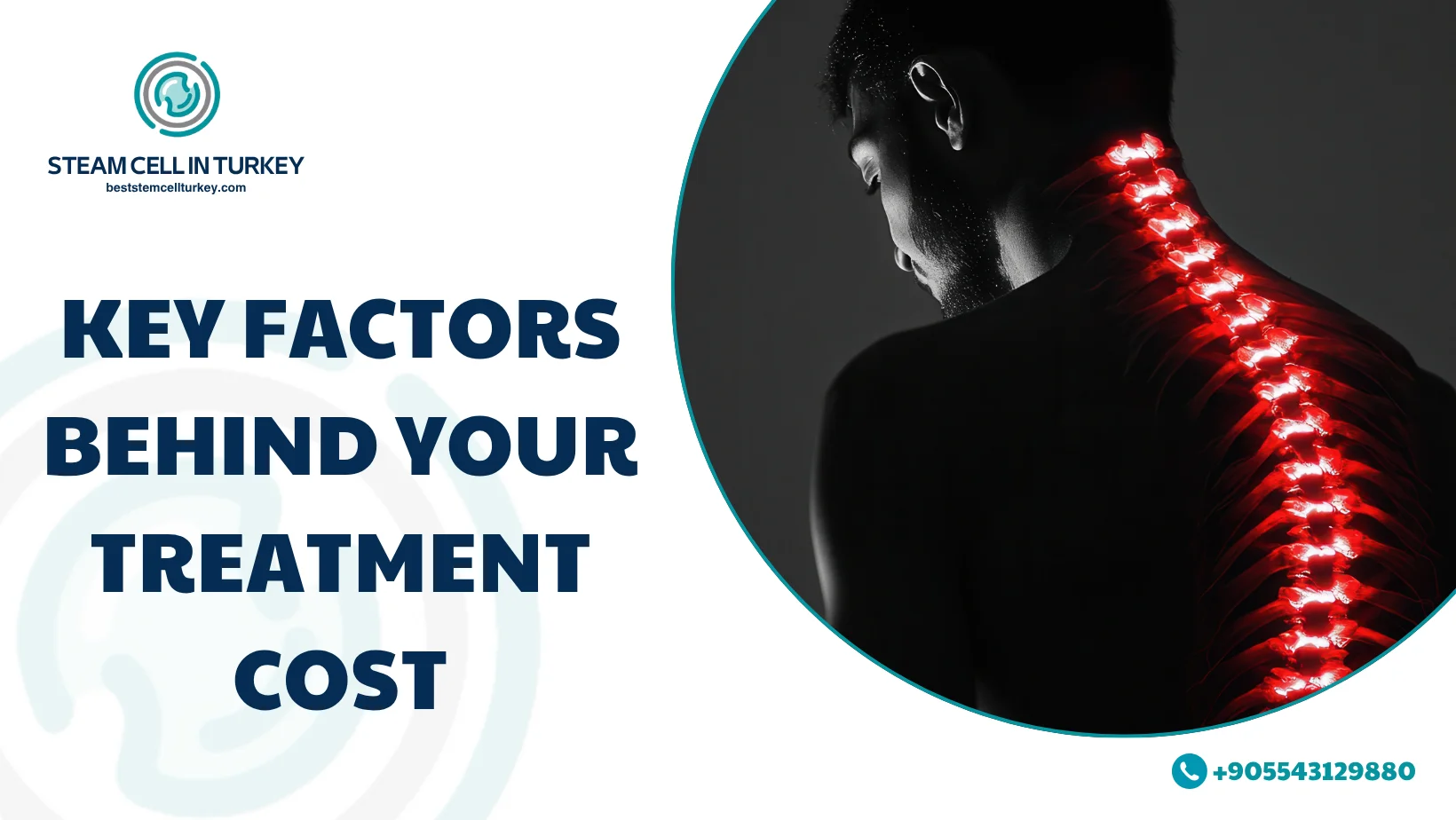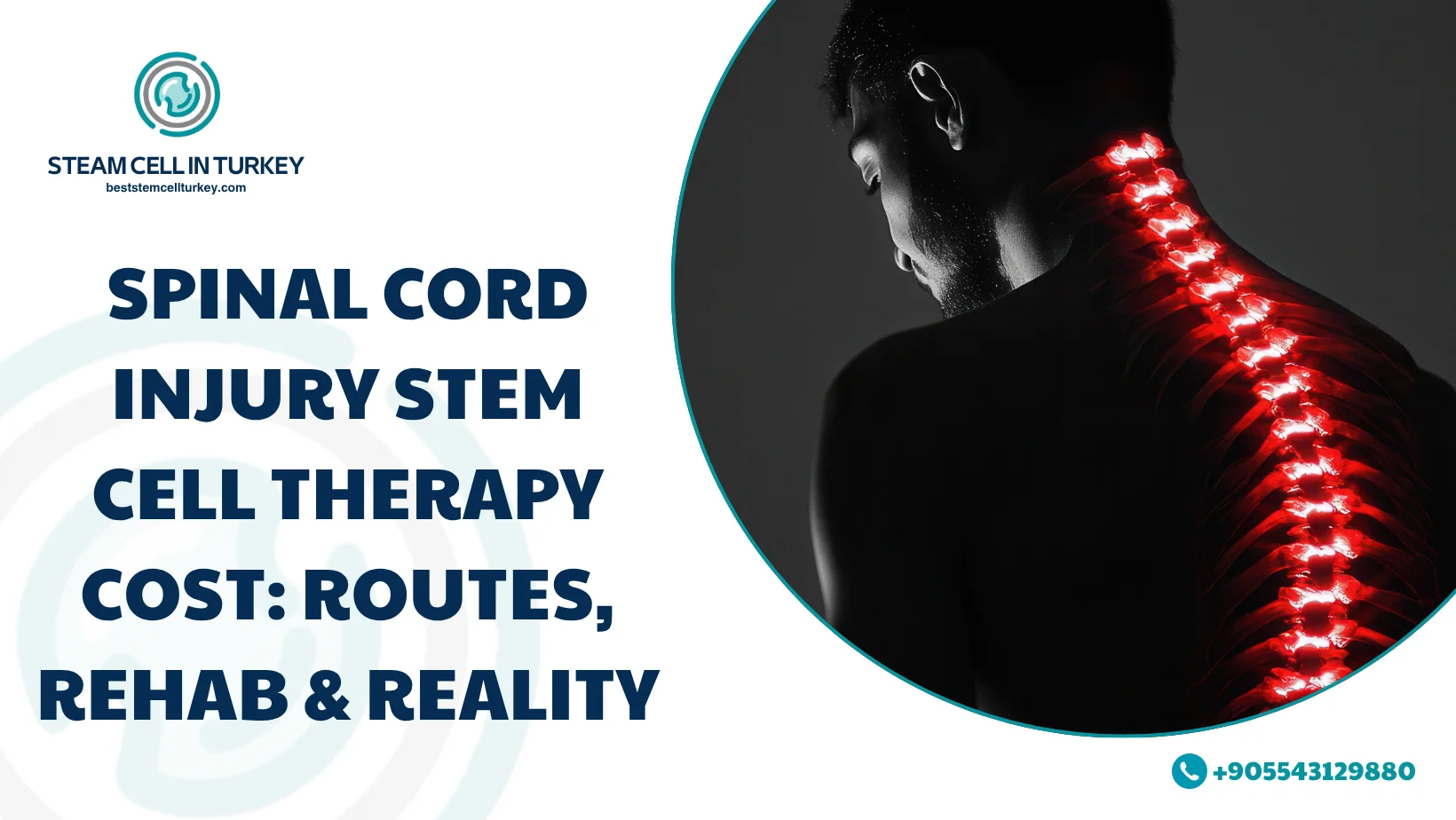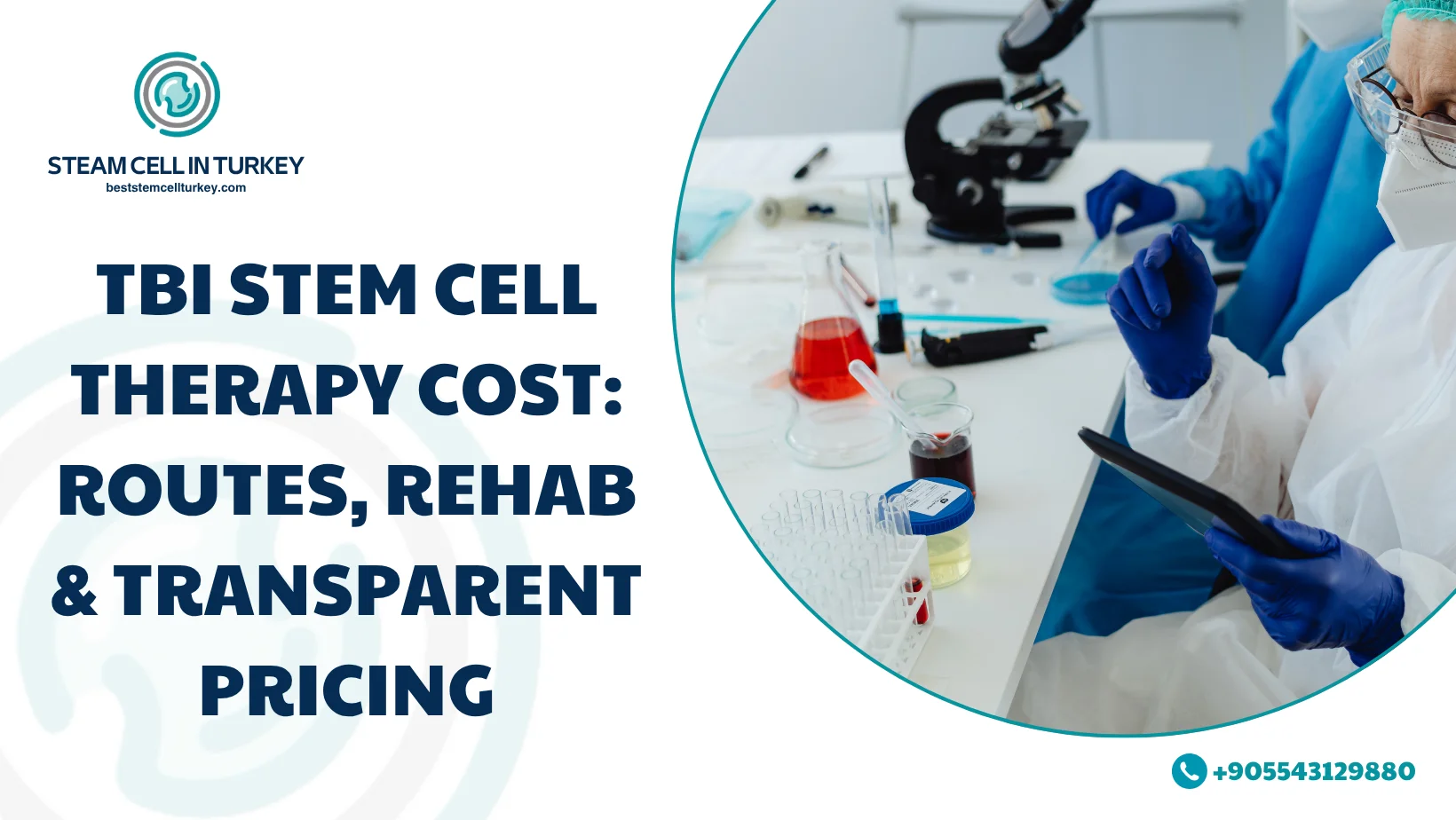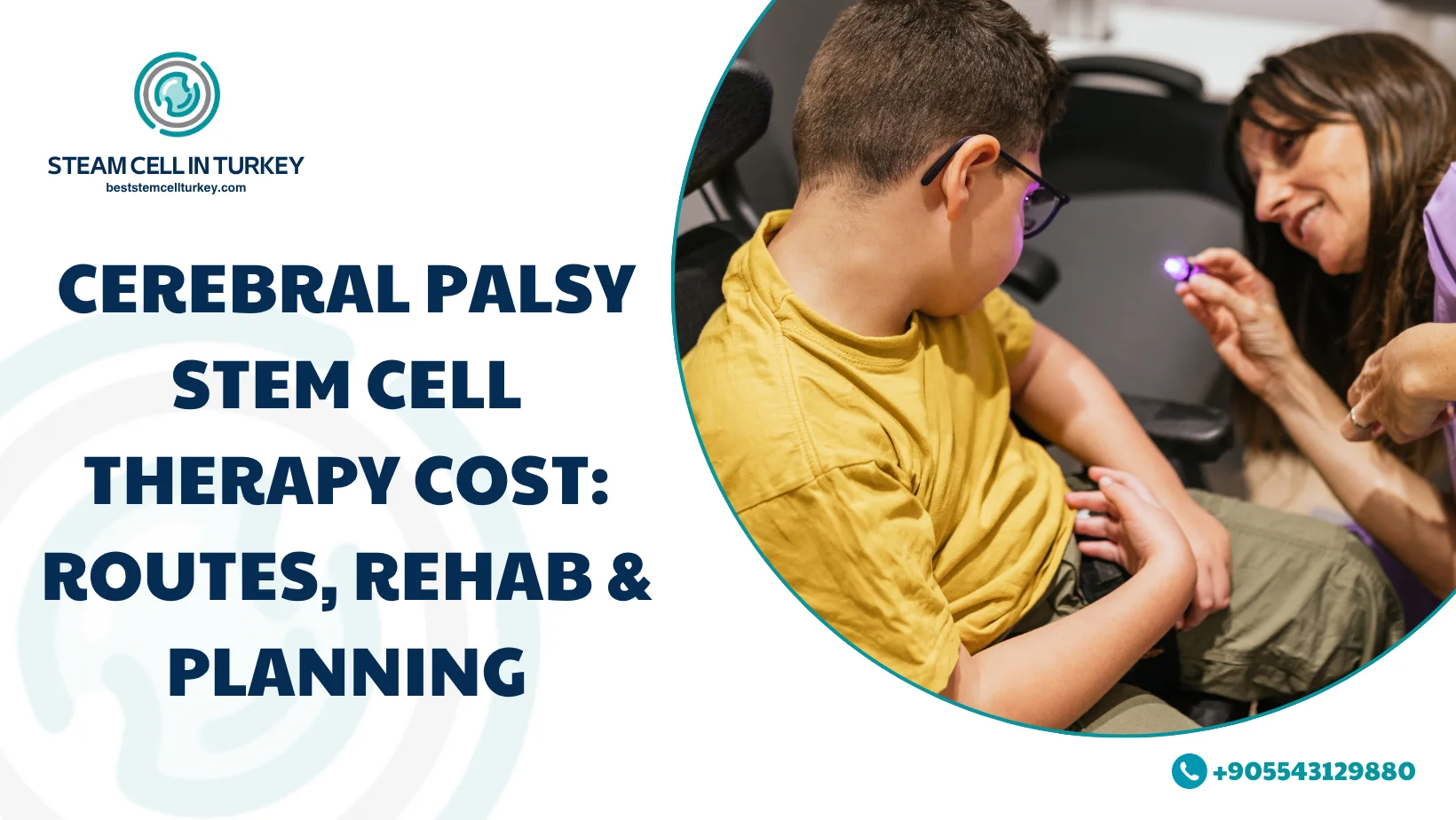Confident planning starts with knowing what you’re actually buying. This guide breaks down the Spinal Cord Injury Stem Cell Therapy Cost and explains how the number moves with therapy type, delivery route (intrathecal vs. intraspinal), manufacturing quality (GMP + batch COA), and the intensity of neuro-rehab wrapped around the procedure—so you can compare quotes fairly, verify paperwork, and plan travel and financing with confidence.
Key Factors Behind Your Treatment Cost

Clinical workup & candidacy
-
Neurologic exam, AIS grade, MRI, spasticity/pain profiling, bladder/bowel status, and respiratory function (for higher lesions). These determine eligibility, monitoring, and rehab intensity.
Cell product & documentation (non-negotiable)
-
GMP certificate (scope/valid dates) + batch COA (identity markers, viability, sterility/endotoxin, mycoplasma, cell count/vial), storage/handling, and chain-of-custody. Cell/gene/tissue products are regulated as ATMPs in the EU.
Delivery route
-
Intrathecal (lumbar puncture): common in human SCI studies; clinic/day-case; lower facility needs; typically priced per session.
-
Intraspinal/intralesional: stereotactic/neurosurgical delivery in the OR with anesthesia and post-op monitoring; higher one-time facility costs; sometimes single larger-dose programs. (Ensure route/rationale are documented.)
Dose & sessions
-
Total cells (often reported in “million cells”), single vs. staged visits, and cumulative dosing across the plan.
Rehabilitation intensity
-
Outcomes hinge on structured, progressive, high-intensity neuro-rehab; higher-touch programs add cost but also value. Build this into the quote—not as an afterthought.
Follow-up windows
-
Scheduled assessments (AIS, motor/sensory, bladder/bowel, spasticity), telehealth check-ins, adverse-event monitoring.
Travel & support
-
International patients: transfers/hotel/interpreter, caregiver logistics, and accessible transport (line-itemed for clarity).
Evidence landscape (expectations, not hype)
Current data show promise but underline caution:
-
Systematic reviews & meta-analyses in human SCI cohorts report moderate, variable functional gains—but stress that larger, blinded RCTs and standardized protocols are still needed.
-
The smart stance is cautious optimism paired with rigorous follow-up, not overpromising.
-
Rehab is non-negotiable: contemporary evidence highlights high-intensity exercise as a critical co-intervention that improves recovery efficiency.
-
Practical takeaway → budget and plan for rehabilitation up front, since it often drives as much value as the cell-based intervention itself.
How to compare quotes fairly
Ask every provider for a written proposal that includes:

1) Includes/Excludes table
-
Workup, procedures, delivery route (intrathecal vs. intraspinal), imaging guidance, anesthesia/sedation, supplies, follow-ups, and rehab blocks (hours/week).
2) GMP & COA packet
-
GMP certificate (scope/dates) + batch COA listing identity, viability, sterility/endotoxin, mycoplasma, cell count, storage/handling, chain-of-custody. (ATMPs in EU; regulated biologics in U.S.)
3) Regulatory posture & consent
-
Clear status (approved vs. investigational), risks, alternatives, and no guarantees—aligned with FDA consumer cautions and ISSCR clinical-translation standards.
4) Pricing math you can verify
-
If relevant, cost per million cells, session count, rehab hours, imaging guidance, anesthesia, and any bundle savings (rehab/travel).
5) Adverse-event process
-
Written instructions and reporting routes (e.g., FDA MedWatch in the U.S.).
Red flags: guaranteed outcomes; vague “per-session” numbers without dose/route; missing GMP/COA; pressure to pay before documentation; no AE reporting plan.
Intrathecal vs. intraspinal: how route changes cost & logistics
When it comes to delivery routes, the logistics and budget shift significantly. Understanding both options helps set expectations up front:
Intrathecal (Lumbar Puncture / LP)
-
-
Usually a day procedure in a clinic setting.
-
Lower facility costs since no operating room is needed.
-
Staged dosing is feasible, which can spread cost and risk over time.
-
Already widely used in SCI human studies, making it the more common and accessible choice.
-
Intraspinal / Intralesional
-
-
Requires operating room time, a neurosurgeon, anesthesia, and post-op monitoring.
-
Naturally results in higher total costs compared to LP.
-
May be selected when aiming at very focal spinal cord targets.
-
Best practice: the decision should be justified in writing, including route-specific risks and safety measures.
-
Rehab bundle (turn the procedure into progress)
A high-yield plan pairs the biologic with task-specific, progressive rehab:
-
Phase 1 (stabilize & prime): spasticity/pain control, orthoses/seating optimization, pressure-injury prevention, early task practice.
-
Phase 2 (capacity & control): high-intensity task practice, trunk/hip control, assisted locomotor or UE task training, bladder/bowel routines.
-
Phase 3 (function & participation): transfers, wheeled mobility/ambulation drills, ADL/IADL goals, community/work reintegration.
-
Checkpoints: AIS components, 10MWT/6MWT or UE dexterity tests, bladder/bowel diaries, caregiver training.
Why patients choose Best Stem Cell Turkey
Choose documentation over hype. Pair verifiable GMP/COA, the right route, and an intensive rehab bundle with clear follow-ups with Best Stem Cell Turkey—then lock your dates and payment path to start sooner and safer.
-
Best price at the highest quality: globally competitive pricing with GMP-grade safeguards and batch COA you can review before you travel.
-
Route clarity: explicit intrathecal vs. intraspinal plan, with imaging/anesthesia line-itemed and justified.
-
Rehab-first approach: intensive, checkpointed rehab integrated into your quote—not added later.
-
Frictionless logistics: time-zone-smart scheduling, secure uploads, concierge travel, and 0%/low-APR paths (subject to eligibility).
→ Book a Free Consultation · See Financing · Compare Packages
FAQs about Spinal Cord Injury Stem Cell Therapy Cost

1) Why do SCI stem cell quotes vary so much?
Costs reflect route (intrathecal vs. intraspinal), dose/sessions, facility/anesthesia needs, and rehab intensity—plus whether a provider can show GMP + COA. Ask for a side-by-side with includes/excludes and cost-per-million-cells (if applicable).
2) Is there solid proof it works?
Human reviews/meta-analyses show moderate, variable improvements, with calls for larger, well-controlled trials. Offers should set cautious expectations and track objective outcomes.
3) Which route is better—intrathecal or intraspinal?
It depends on goals, level of injury, and risk tolerance. Intrathecal is common and logistically easier; intraspinal is more invasive and costlier but may be proposed for focal targets. The rationale must be written in your plan.
4) What paperwork should I demand before paying?
GMP certificate (scope/dates), batch COA (identity, viability, sterility/endotoxin, mycoplasma, cell count), storage/handling, and written AE reporting steps (e.g., MedWatch in the U.S.).
5) Can I finance or bundle travel and caregiver support?
Yes—use Financing for structured payments and Packages for transfers, hotel, interpreter, and accessibility planning.
Medical Sources
-
FDA — Important Patient & Consumer Information; Consumer Alerts on unapproved stem-cell/exosome products; MedWatch reporting. U.S. Food and Drug Administration+2U.S. Food and Drug Administration+2
-
EMA — Advanced Therapy Medicinal Products (ATMP) overview & definitions. (EMA)+1
-
ISSCR — Guidelines for Stem Cell Research and Clinical Translation (2021, official site & PDF). isscr.org+1
-
Human SCI evidence — 2025 systematic review/meta-analysis; intrathecal routes & clinical trials context. PMC+1
-
Rehab importance — High-intensity exercise effects and recovery context after SCI. Frontiers
Ready to plan with confidence?
→ Book a Free Consultation
→ Explore Financing Options
→ contact with us via what’s up



